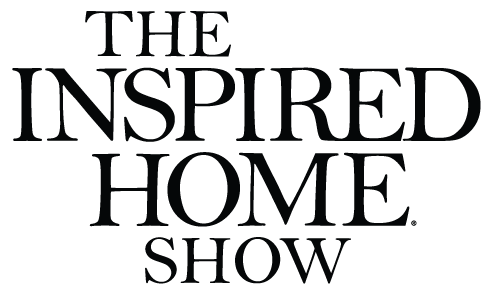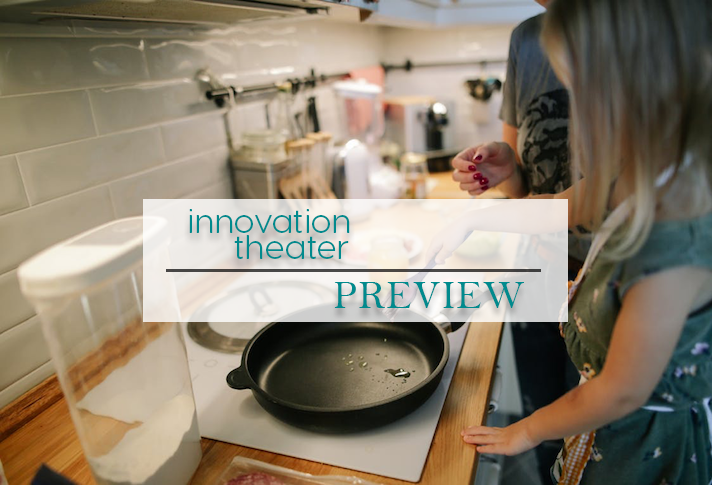After earning a PhD in cultural anthropology, Russell began her consumer research career by consulting on projects for brands that include Adobe, Campbell’s, Electrolux, Kraft, McDonald’s and Philips. She went on to build and manage a successful in-context research practice for a Fortune 200 consumer packaged goods company, representing the voice of the consumer to senior leadership, brand management and product development.

Paitra Russell
Trimmingham leverages his education in mathematics and a master’s in industrial design, along with more than 25 years of consulting experience, to create unique strategies for innovative initiatives. After working in corporate design and IT roles, he founded and built a successful design and marketing agency. He has delivered award-winning people-engagement solutions across 17 industries, working with brands that include BP, Crate & Barrel, ITW, McKinsey & Company, Motorola and Wells Fargo.
In 2007, Paitra and Joeffrey co-founded Philip Reese, based in Richmond, Va. This research and insights consultancy digs into consumer motivations and experiences to deliver human stories that deepen brands’ knowledge of their consumers. The Philip Reese team takes innovators and brand builders into the consumer context and helps design people-based strategies for household durables, consumer goods and education clients, among others.
Paitra and Joeffrey, what is the most exciting or rewarding part of your work? What fuels your inspiration?
Three big things inspire us. First, it’s always fun to get to know an audience or customer segment—to see the “why” behind behavior trends—and share that with our clients for a very robust understanding of what’s driving consumer decisions. Then, we get really excited when our clients can apply that understanding to concrete plans, be it for new product development, a commercialization strategy, a digital marketing strategy or something else. “Consumer insight” is a very broad term that can feel “fuzzy” or vague. Applying it requires our clients to really internalize what they’re hearing and seeing, and put it together with their own internal, expert knowledge. Being part of that process is wonderful. And finally, there’s the “WOW!” moment that our clients often experience. It can be the moment when a client starts thinking differently about something that they’ve always taken for granted. Or it can be when something they’ve been struggling to understand or figure out becomes clear. That moment always gives us goosebumps.
Can you name a pivotal event or project that impacted your career or company?
Several years ago, we were working on a project to help a client understand its consumer segments better. Their products were developed and marketed with the assumption that customer needs were pretty well aligned with age, so we were looking to understand what those needs were. What we learned instead was that the defining characteristic of their segments needed to shift and showed them what needs people really had in common, which cut across age groups. That had big implications for product features as well as marketing communications.
This has happened in other projects, too. So, a hallmark of our approach is the knowledge that actionable audience definitions can be quite unexpected. Some audiences may have demographic skews, but the true needs or motivations driving behavior often cut across conventional categories. A big part of our mission is to help our clients see through or past very broad categories of people.
In the past few years, what has changed most in your business? How has your company met these challenges in the way you do your work?
Two by-products of the emergence of digital, really have been game-changers. First, digital tracking means our clients have unprecedented amounts of quantitative data about their customers. So, there’s increasing reliance on big data analytics in market research. The challenge is that clients are often “data rich” but “insights poor.” They know a lot of the what, where, when, but not enough of the why. You really need the “why” to successfully navigate the increasingly fragmented consumer landscape.
Second, just like for our clients, digital has impacted how we actually do our work—in both helpful and challenging ways. Often, we must adapt very personal, previously face-to-face research methods to mobile or remote interactions that are just as revealing. To address the shifts caused by digital, we’ve invested in tools that help us to be more nimble, responsive and, of course, cost-effective, but that allow us to keep the richness and context, which are what make qualitative research so valuable to our clients.

Joeffrey Trimmingham
Joeffrey, how do you de-stress and find balance in the demanding 24/7 workplace?
This is tough, especially for the creative people who make up the worlds of product design, development, branding and marketing! It is so tempting to “always be creating.” But having down time is essential to creativity. We’ve found that mastering routines, which happens to be our company theme this year, goes a long way toward creating efficiencies. And being efficient in one area frees up time in another. It’s not the most exciting thing, but routines allow your brain to work a little less on some things. It doesn’t mean there’s never a change, but being willing to commit to routines actually saves energy.
There are a few other basic practices: we turn off phones at night, we limit social media and we schedule down time into the company calendar for the entire year. On a personal level, doing “non-digital” activities like reading a paper book or writing something long-hand, physical outdoor activity or silent meditation—they all help to make work less taxing.
Paitra, tell us what you will be speaking about and how this topic is important for Show audiences.
Our clients hear all the time how important it is to be customer-centric—to attune their products and communications to consumer needs and mindsets. But how do you do that? We’ll explain to the Show audience how direct interaction with consumers —qualitative consumer research—can help them understand the people behind the big data and macro trends they hear about. The things that drive seemingly identical people to purchase a certain brand or product or to shop in a certain way can be very different. Understanding these differences helps you to create separation from your competitors, to communicate in ways and in places that resonate with your audiences, and to drive loyalty. It can be hard to see those differences in big data, but you can see them through direct, real time engagement with people.
What do you see as consumers’ biggest concerns regarding housewares products or how to shop for them?
We hear about quality and relevance. We see household durables clients, for example, incorporating features that their customers don’t want, need or understand—things that aren’t actually making their lives better or less stressful. Most consumers don’t care about isolated features. They live integrated lives and want features that move the needle across the board. As for quality, we hear consumers expressing disappointment with expensive appliances that look great but don’t last. There is quite a bit of focus on “mass affluent” segments, while the number of consumers who have to do more with less is growing. These consumers are increasingly pinched and planned obsolescence may actually defeat our goals as brand builders.
Obviously, the other huge concern is privacy and trust with the continuing emergence of “smart.” Consumers are beginning to wonder about products that are always listening or that access private data. They’re thinking about the trade-offs between convenience and risks.
What are some of today’s trends or issues that new product development professionals and/or retailers face in the housewares market?
In the confluence of multiple business and societal trends impacting new product development professionals and retailers, not least is the shift toward “digital natives” as the generation with the most buying power. Ironically, the push toward “customer centricity” means consumers have many more product options and many more ways to shop, which in turn makes differentiation harder. Add superfast followers (a.k.a. knockoffs), direct-to-consumer brands, retailer private labels and the push toward subscription purchasing to the mix, and we see consumers becoming brand agnostic.
On top of that is a growing preference for smaller, local brands—definitely in food and health and beauty—but also, increasingly, in housewares. You can get locally made housewares at the farmer’s market along with your locally grown produce—or go to Etsy. All of these trends are putting pressure on margins. The “adapt or die” environment continues to dominate. It’s always been true for business, but the speed at which adaptation is required really is unprecedented. One of our favorite books is “It’s Not the Big That Eat the Small, It’s the Fast That Eat the Slow.” But being fast by itself is not enough to be sustainable. You need speed and continually renewing relevance to sustain advantage.
To learn more about the work done by Paitra Russell and Joeffrey Trimmingham, see www.philipreese.net
––
Thank you, Paitra and Joeffrey, for your thoughtful summary of how you apply anthropology insights and design thinking to how you study consumer needs and behavior. We look forward to learning more from you both at your presentation on the Show’s opening day, March 14 at 3:30 p.m. in the Innovation Theater.
Understand the People Behind the Numbers to Position Your Brand and Drive Loyalty
Saturday, March 14 | 3:30 – 4:20 p.m.
Be sure to attend the free executive-level educational sessions at the Innovation Theater to hear about successful retail practices as well as the latest research and analysis of home trends and forecasts for products in the smart home, kitchen and health care categories. These programs will give you a fresh perspective as you walk the Show and will inspire, inform and improve your business. All programs will be audio-recorded and will be available at The Inspired Home Show after the Show.


